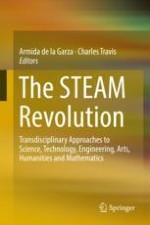2019 | OriginalPaper | Chapter
8. From STEM to STEAM at the Beautiful Midden Field School: An Artist/Educator Perspective
Author : Dr Anita McKeown
Published in: The STEAM Revolution
Publisher: Springer International Publishing
Activate our intelligent search to find suitable subject content or patents.
Select sections of text to find matching patents with Artificial Intelligence. powered by
Select sections of text to find additional relevant content using AI-assisted search. powered by
